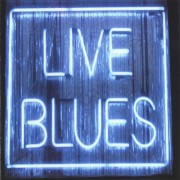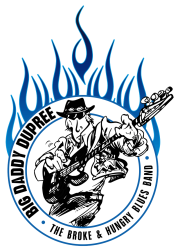Did Blues Influence Rock and Roll?
When we think of rock and roll, we think electric guitars, amplified sounds, and intricate styles of play, but what if I were to tell you rock and roll would not have existed without simple 12-bar forms, antiphonic textures, or walking bass lines used in blues music? Well I am here to tell you it is true. Blues music is one of the most influential characteristics that gave birth to rock and roll. Beginning in the Mississippi Delta region with African slave work songs and expanding to areas of Chicago and Dallas, blues went on to inspire rock legends such as: the Beatles, the Rolling Stones, and Jimi Hendrix.
Multiple elements in rock and roll provide evidence of common blues qualities. Rock and roll was influenced by elements of blues instrumentation, rhythm, and purpose. Both rock and blues are composed of drums, guitars, and vocals. As blues was becoming increasingly popular throughout the 1950s, manipulation of notes and amplifying instruments occurred. Muddy Waters, for example, began experimenting with increasing the dynamics of guitars and bending the notes of the guitars to give it a “cry” sound. Does this sound familiar? As blues music developed, it pushed the emergence of rock and roll more and more. Early rock and roll followed a similar rhythm to blues music as well. As it progressed, rock and roll would end up integrating more intense rhythmic elements with an accentuated backbeat, but the foundation was the same. The purpose behind the music, produced by blues and rock and roll, is designed from the same perspective. The goal of both these genres of music is to create music with raw emotion. The blues emotion-driven style of music inspired the same pattern to be followed by rock and roll.
Many famous rock and roll bands were influenced by similar popular blues artists such as: Chuck Berry, Muddy Waters, and Little Richard. Blues, along with the artists that produced it, was significant in the inspiration of the Beatles. The Beatles had a great deal of respect for Chuck Berry and what he did for music. Lennon once said, “If you tried to give rock and roll another name, you might call it ‘Chuck Berry’.” The Beatles credited Berry for being an important piece for creating rock and roll. Chuck Berry also influenced the Beatles with the lyrical content within his songs. The Beatles performed and recorded multiple covers of Berry’s songs like: “Sweet Little Sixteen,” “Carol,” “I Got to Find My Baby,” “Too Much Monkey Business,” “Johnny B Goode” etc. It is easy to see that blues had an impact on rock and roll because a rock and roll band considered one of the best that ever lived, integrated it into their music.
In the video below, you can hear the blues influence in the Beatle’s song, “Yer Blues”. There is a use of an electric blues guitar and guitar riffs occur at 2:54. The song also shows the use of long drawn out lyrics. The lyrics are about being lonely and having suicidal thoughts, which relates to the emotion involved in blues music.
The Rolling Stones started out playing blues music in Britain and fused it with the rock and roll music they would be known for playing in the United States. The Rolling Stones were also a band influenced by the blues music of Chuck Berry. The Rolling Stones covered Berry’s songs like, “Come On”, and solidified the incorporation of blues roots into rock and roll. Muddy Waters was most likely the biggest influence on the Rolling Stones. They actually got the name for their band from the Muddy Waters song, “Rollin’ Stone”. The Rolling Stones often wrote blues songs with a heavier melody than improvisation. The Stones are one of the most obvious examples for showing the effect blues had on creating rock and roll.
Jimi Hendrix relied on a variety of blues artists for inspiration. Hendrix grew up listening to Little Richard, Muddy Waters, and Chuck Berry. Little Richard inspired Hendrix’s blues roots and the sound he wanted to create with his guitar. Jimi Hendrix stated, “I want to do with my guitar what Little Richard does with his voice.” Muddy Waters was the first guitarist Hendrix heard and he marveled at the sounds Waters made with his guitar. Hendrix got his rock and roll attitude and over the top performance style from Chuck Berry. Berry was known for his famous duck walk and playing his guitar behind his head and in between his legs. Hendrix would follow by Berry’s example and put on charismatic performances.
How did Blues Influence Rock and Roll?
When we think of rock and roll, we think electric guitars, amplified sounds, and intricate styles of play, but what if I were to tell you rock and roll would not have existed without simple 12-bar forms, antiphonic textures, or walking bass lines used in blues music? Well I am here to tell you it is true. Blues music is one of the most influential characteristics that gave birth to rock and roll. Beginning in the Mississippi Delta region with African slave work songs and expanding to areas of Chicago and Dallas, blues went on to inspire rock legends such as: the Beatles, the Rolling Stones, and Jimi Hendrix.
Multiple elements in rock and roll provide evidence of common blues qualities. Rock and roll was influenced by elements of blues instrumentation, rhythm, and purpose. Both rock and blues are composed of drums, guitars, and vocals. As blues was becoming increasingly popular throughout the 1950s, manipulation of notes and amplifying instruments occurred. Muddy Waters, for example, began experimenting with increasing the dynamics of guitars and bending the notes of the guitars to give it a “cry” sound. Does this sound familiar? As blues music developed, it pushed the emergence of rock and roll more and more. Early rock and roll followed a similar rhythm to blues music as well. As it progressed, rock and roll would end up integrating more intense rhythmic elements with an accentuated backbeat, but the foundation was the same. The purpose behind the music, produced by blues and rock and roll, is designed from the same perspective. The goal of both these genres of music is to create music with raw emotion. The blues emotion-driven style of music inspired the same pattern to be followed by rock and roll.
Many famous rock and roll bands were influenced by similar popular blues artists such as: Chuck Berry, Muddy Waters, and Little Richard. Blues, along with the artists that produced it, was significant in the inspiration of the Beatles. The Beatles had a great deal of respect for Chuck Berry and what he did for music. Lennon once said, “If you tried to give rock and roll another name, you might call it ‘Chuck Berry’.” The Beatles credited Berry for being an important piece for creating rock and roll. Chuck Berry also influenced the Beatles with the lyrical content within his songs. The Beatles performed and recorded multiple covers of Berry’s songs like: “Sweet Little Sixteen,” “Carol,” “I Got to Find My Baby,” “Too Much Monkey Business,” “Johnny B Goode” etc. It is easy to see that blues had an impact on rock and roll because a rock and roll band considered one of the best that ever lived, integrated it into their music.
In the video below, you can hear the blues influence in the Beatle’s song, “Yer Blues”. There is a use of an electric blues guitar and guitar riffs occur at 2:54. The song also shows the use of long drawn out lyrics. The lyrics are about being lonely and having suicidal thoughts, which relates to the emotion involved in blues music.
http://www.youtube.com/watch?v=fevQPZDyxdk
The Rolling Stones started out playing blues music in Britain and fused it with the rock and roll music they would be known for playing in the United States. The Rolling Stones were also a band influenced by the blues music of Chuck Berry. The Rolling Stones covered Berry’s songs like, “Come On”, and solidified the incorporation of blues roots into rock and roll. Muddy Waters was most likely the biggest influence on the Rolling Stones. They actually got the name for their band from the Muddy Waters song, “Rollin’ Stone”. The Rolling Stones often wrote blues songs with a heavier melody than improvisation. The Stones are one of the most obvious examples for showing the effect blues had on creating rock and roll.
Jimi Hendrix relied on a variety of blues artists for inspiration. Hendrix grew up listening to Little Richard, Muddy Waters, and Chuck Berry. Little Richard inspired Hendrix’s blues roots and the sound he wanted to create with his guitar. Jimi Hendrix stated, “I want to do with my guitar what Little Richard does with his voice.” Muddy Waters was the first guitarist Hendrix heard and he marveled at the sounds Waters made with his guitar. Hendrix got his rock and roll attitude and over the top performance style from Chuck Berry. Berry was known for his famous duck walk and playing his guitar behind his head and in between his legs. Hendrix would follow by Berry’s example and put on charismatic performances.
http://www.youtube.com/watch?v=BCsfh5ItkEc
In the video above, you can see the performance style and duck walk of Chuck Berry. Berry gave rock and roll an attitude and indentified rock and roll as a lifestyle. At 0:30 into the video, Berry squats down with his knees bowed inwards before rising again ten seconds later and rocking his body back and forth. Then he squats down and does his famous strutting duck walk at 0:50. Also, throughout the video he plays his guitar at a fast pace and plucks the strings ferociously.
http://www.youtube.com/watch?v=SuTne–8XOk
In the video above, you can see the similarities between the first video of Chuck Berry and Jimi Hendrix in their eccentric performances. Throughout the video, Jimi Hendrix is moving all over the stage and breaks out into multiple guitar solos. At 1:20 you can see Hendrix playing his guitar behind his head and then playing his guitar with his teeth at 1:50. Next, at 2:50, he drops to his knees and lights his guitar on fire while taunting the flames to get higher. Finally, he smashes his guitar against the stage. This video is a testament to the attitude Chuck Berry and the blues gave to rock and roll.
Rock and roll borrowed so many different blues aspects and put them into its music and performances. Integrated blues aspects range from instrumentation to the story told behind the music. Whether influenced by blues music or blues musicians, the fact remains that blues had a monumental impact on the birth of rock and roll.







